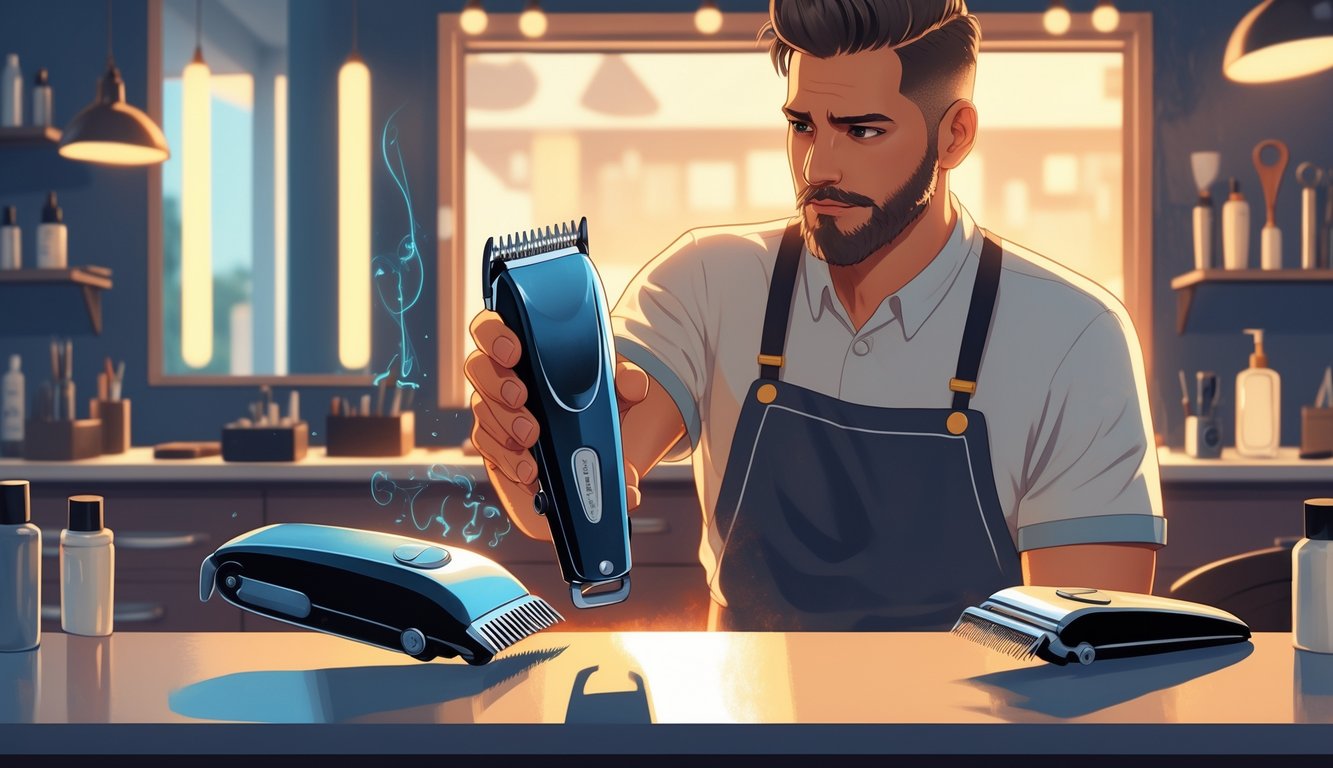
Barbers’ Insights on Budget Clippers
Every week, someone waltzes in with a bargain-bin clipper, still in the plastic, acting like they just scored a miracle. Half the time, those motors sound like dying bees. Cheap clippers promise pro results, but mostly they just stall, leave a mess, and double my cleanup time before lunch.
Professional Experiences
Two hours into Monday, I already regret letting a $25 clipper near anyone’s head. Guards nicked, blades weak, the thing buzzing so loud it rattles the mirror. Saw a rookie swear by some Limural kit—jammed after three fades. Lesson learned. Real pro clippers? They’re $150 and up for a reason. Motors run smooth, every pass is clean, and they don’t choke on thick hair. Customers don’t see it, but cheap plastic gears and dull blades mean uneven cuts, snags, more “fixing” than cutting, and you end up buying two or three replacements every year. There’s a reason for the “buy cheap, buy twice” joke. Never met a veteran barber who trusted a bargain tool for daily work.
Wet hair, dry hair—doesn’t matter. Cheap clippers overheat in ten minutes, blades dull fast, and sometimes detangling the mess takes longer than the haircut. Track the real cost over six months—and the headaches—and they quietly bleed your wallet. Meanwhile, my old set, oiled and cleaned every night, is still kicking after fifteen years. People ask if “budget” means “smart.” All I see is jammed guards and crooked lines.
Customer Complaints in the Shop
So many times, a regular comes in bragging about his Amazon deal—“Hey, can you fix this?” They hand me a Philips Norelco Multi Groomer or some off-brand pivot motor thing, marketed as “budget-friendly.” First thing I spot? Crooked lines, missed hairs, and—every single time—red, irritated skin. They blame their hair, but it’s really the clippers chewing instead of cutting.
Yesterday, dad and son show up with patchy heads from a guard slipping mid-buzz. I fixed it, but it took twice as long as usual. Clients always ask, “Why can’t I get this look at home?” Then they show me some kit with a weird adapter, rattling guards, barely adjustable blades. They’re out fifty bucks for the “deal,” then another thirty here, and still grumpy. I wish I had a chart to show how most budget clippers just drain your money and patience.
It’s wild—people think a $30 trimmer can do a real skin fade. All it does is break and overheat. No pro swaps their Andis or Oster for a mail-order bargain, no matter what the box says. Every week, I’m fixing home hair disasters.
Performance Differences: Cheap vs. Quality Clippers
Isn’t it weird? I can buy a $10 kitchen knife that’ll cut through a watermelon, but a $20 hair clipper? Loud, slow, maybe gets through one haircut before the battery dies or it starts yanking hair for no reason. Honestly, cheap clippers aren’t even worth the price—they’re just a headache waiting to happen.
Power and Efficiency
Ever try to buzz your own head with one of those plastic clippers from the drugstore? I did, and wow—absolutely nothing happened except a faint buzzing and a lot of regret. I mean, what’s the deal with those 5W motors? Some brands just slap a tiny engine in there and call it a day, while the ones people actually respect—think Wahl, Andis, Oster—are running rotary or pivot motors with 10, 12, 15 watts. I read a Reddit post where someone claimed their Wahl Senior’s V9000 “removes bulk like butter,” which, okay, that’s dramatic, but honestly, if you’ve ever tried to take down a thick mop with a $14 travel clipper, you’d probably write poetry about a real motor too.
And battery life—don’t get me started. I had a cordless that cut out after fifteen minutes, right in the middle of a fade. What am I supposed to do, finish with scissors? The pro models, they’ll last an hour, hour and a half, sometimes more. Not that I’m timing it, but still. And the noise—every cheap clipper claims “ultra-quiet,” but in a real shop, the only quiet clippers are the ones that can’t cut hair. The rest, you want a low hum, not a rattle. If it’s silent, it’s probably dying. Power matters. Speed matters. You can’t fake it. Barbers have said it forever—weak clippers mean you’re going over the same spot five times and still missing patches. Actually, you just end up doing more work for worse results.
Sharpness and Cutting Precision
People keep asking if expensive clippers are sharper. I don’t know, are expensive knives sharper? Yeah, usually. Cheap clippers skip the hardened steel, or they glue on some weird ceramic blade that chips after six months. I’ve tried self-sharpening blades—they’re not magic, but the good ones (Wahl, Andis, whatever) actually stay sharp enough that you’re not gnawing through hair like it’s a hedge.
Precision isn’t some marketing thing. Those little side levers and fancy attachments? They’re not just for show. I can actually fade and line up without the blade popping off my head or skipping over cowlicks. Cheap guides wobble, sometimes the plastic teeth snap right off—literally, I’ve seen it happen, and then you’re picking plastic out of someone’s hair while trying to pretend you meant to do that.
Every barber I know will tell you: spend the hundred bucks on a real tool with self-sharpening blades and you’ll spend less time fixing mistakes, no more patchy spots, no more rewashing. Cheap clippers just give you itchy hair dust and that sinking feeling you wasted your money. Don’t take my word for it, ask any pro who’s stuck three clients behind because their backup trimmer can’t even cut a straight line. If you haven’t seen pivot motor speed tests, you’re missing out. There’s a reason side-by-side comparisons exist. You can’t fake sharpness, or the weight of a decent clipper.



